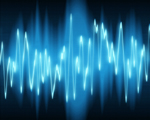Fundamentally, sound is “that which we hear”. What we hear at any given time can greatly influence us. We use sound to communicate, to express warning, fear, pleasure and excitement. Some sounds can relax us and help us fall asleep, while other sounds can distract us and make it more difficult to perform simple tasks. Different sounds can be soothing and pleasing or annoying and irritating. Accordingly, determining “What is sound?” and “What is noise?” can become a highly subjective task. As engineers and scientists, it’s our job to generate generalized models that have a high level of correlation to humans (or to specific populations).
Sound is a fundamental part of our lives, and significant effort has been spent over the years on understanding the production, transmission and perception of sound. The science of sound, or “acoustics”, has expanded beyond the study of the phenomena in air responsible for that which we hear. In current usage, acoustics has expanded to include the study of all similar mechanical disturbances governed by the same physical principles of sound, including those oscillatory disturbances that exist at frequencies too low (infra-sound) and too high (ultrasound) to be heard by humans. This science allows us to understand the pressure fluctuations in a medium and how that energy is propagated, dissipated, reflected and/or transduced by other objects upon which the sound energy is incident.
If noise is that part of sound that is “unwanted,” then noise control is the study of elimination or reduction of the “unwantedness” of sound. Traditionally, engineers attempt to greatly reduce or eliminate sound energy. This process may be difficult and expensive in many applications, and in fact may sometimes be unnecessary or even directionally incorrect.
An antonym for noise has not been defined, so to coin a new term, let us define “esion” (noise spelled backwards) as that part of sound that is wanted or desired. Under this definition, the sense of wantedness or unwantedness is context driven. At first blush, music would be esion; however, some of my favorite music (esion to me) is noise to my father. The chimes on Big Ben would be assumed to be esion, but what about when they interrupt your sleep? The sound of a Harley Davidson motorcycle is esion to the owner but likely noise to the rest of the neighborhood. Matching product sound to the preferred sound for all similar products (or matching to an expected sound) is really a way of defining auditory craftsmanship. This leads to the notion of understanding the relationship of the sound with the observer. Is sound that the observer is exposed to a result of active participation (e.g., you went to the concert, you are driving the Harley, etc.) or is the exposure involuntary (e.g., your neighbor is driving the Harley, music is coming from the apartment next door, etc.)?
At Acoustics By Design, sound is not just a job to us; it is a passion and a lifestyle. As engineers and artists we want to keep the conversation going about sound – how it impacts us, how we interpret it, and so on. What do you think? What is noise to you, and what is esion? Is it all relative? We’re interested in hearing what you think. Join the discussion by posting comments below.

Pete,
Esion….clever new word! I like it.
Jodi
Hmmm… could open up a new area of activity for AV contractors: Esion Masking!